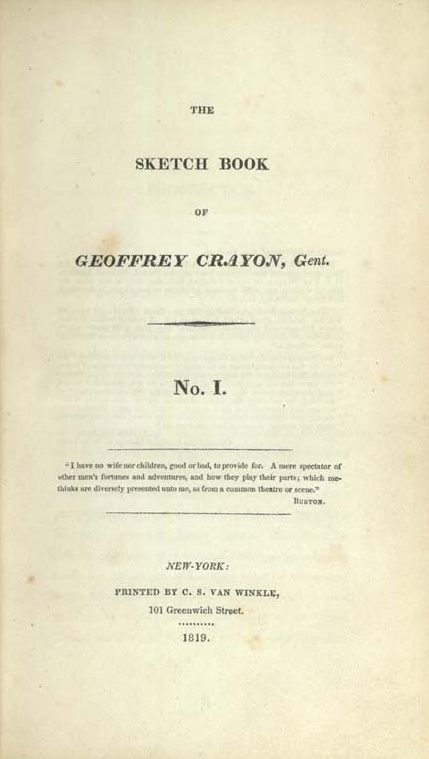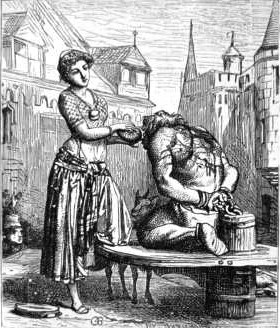|
The World's Wife
''The World's Wife'' is a collection of poetry by Carol Ann Duffy, originally published in the UK in 1999 by both Picador and Anvil Press Poetry and later published in the United States by Faber and Faber in 2000. Duffy's poems in ''The World's Wife'' focus on either well known female figures or fictional counterparts to well known male figures. The themes of the poems focus on the complexities of gender relations, the roles of women, and the often ill treatment of women through fictional, biblical, mythical, and historical contexts. Duffy often also makes modern day references in her poems in order to connect the different settings together into a cohesive collection and also highlight how the ill treatment towards women has endured through all the different contexts and into the modern era. Background ''The World's Wife'' is Carol Ann Duffy's fifth collection of poetry. Her previous collection, ''Standing Female Nude,'' is tied to romantic and amorous themes, while her colle ... [...More Info...] [...Related Items...] OR: [Wikipedia] [Google] [Baidu] |
Carol Ann Duffy
Dame Carol Ann Duffy (born 23 December 1955) is a Scottish poet and playwright. She is a professor of contemporary poetry at Manchester Metropolitan University, and was appointed Poet Laureate in May 2009, resigning in 2019. She was the first female poet, the first Scottish-born poet and the first openly gay poet to hold the Poet Laureate position. Her collections include ''Standing Female Nude'' (1985), winner of a Scottish Arts Council Award; ''Selling Manhattan'' (1987), which won a Somerset Maugham Award; ''Mean Time'' (1993), which won the Whitbread Poetry Award; and ''Rapture'' (2005), which won the T. S. Eliot Prize. Her poems address issues such as oppression, gender, and violence in accessible language. Early life Carol Ann Duffy was born to a Roman Catholic family in the Gorbals, considered a poor part of Glasgow. She was the daughter of Mary (née Black) and Frank Duffy, an electrical fitter. Her mother's parents were Irish, and her father had Irish grandparen ... [...More Info...] [...Related Items...] OR: [Wikipedia] [Google] [Baidu] |
Aesop
Aesop ( or ; , ; c. 620–564 BCE) was a Greek fabulist and storyteller credited with a number of fables now collectively known as ''Aesop's Fables''. Although his existence remains unclear and no writings by him survive, numerous tales credited to him were gathered across the centuries and in many languages in a storytelling tradition that continues to this day. Many of the tales associated with him are characterized by anthropomorphic animal characters. Scattered details of Aesop's life can be found in ancient sources, including Aristotle, Herodotus, and Plutarch. An ancient literary work called ''The Aesop Romance'' tells an episodic, probably highly fictional version of his life, including the traditional description of him as a strikingly ugly slave () who by his cleverness acquires freedom and becomes an adviser to kings and city-states. Older spellings of his name have included ''Esop(e)'' and ''Isope''. Depictions of Aesop in popular culture over the last 2,500 yea ... [...More Info...] [...Related Items...] OR: [Wikipedia] [Google] [Baidu] |
Rip Van Winkle
"Rip Van Winkle" is a short story by the American author Washington Irving, first published in 1819. It follows a Dutch-American villager in colonial America named Rip Van Winkle who meets mysterious Dutchmen, imbibes their liquor and falls asleep in the Catskill Mountains. He awakes 20 years later to a very changed world, having missed the American Revolution. The concept is ancient, including the 70-year nap by Choni HaMeA-Gail. Irving, inspired by a conversation on nostalgia with his American expatriate brother-in-law, wrote his story while temporarily living in Birmingham, England. It was published in his collection, '' The Sketch Book of Geoffrey Crayon, Gent.'' While the story is set in New York's Catskill Mountains near where Irving later took up residence, he admitted, "When I wrote the story, I had never been on the Catskills." Plot Rip Van Winkle, a Dutch-American man with a habit of avoiding useful work, lives in a village at the foot of New York's Catskill M ... [...More Info...] [...Related Items...] OR: [Wikipedia] [Google] [Baidu] |
Pygmalion (mythology)
In Greek mythology, Pygmalion (; Ancient Greek: Πυγμαλίων ''Pugmalíōn'', ''gen''.: Πυγμαλίωνος) was a legendary figure of Cyprus, who was a king and a sculptor. He is most familiar from Ovid's narrative poem ''Metamorphoses'', in which Pygmalion was a sculptor who fell in love with a statue he had carved. In Ovid In book 10 of Ovid's ''Metamorphoses'', Pygmalion was a Cypriot sculptor who carved a woman out of ivory. He named her Galatea. According to Ovid, when Pygmalion saw the Propoetides of Cyprus practicing prostitution, he began "detesting the faults beyond measure which nature has given to women". He determined to remain celibate and to occupy himself with sculpting. He made a sculpture of a woman that he found so perfect he fell in love with it. Pygmalion kisses and fondles the sculpture, brings it various gifts, and creates a sumptuous bed for it. In time, Aphrodite's festival day came and Pygmalion made offerings at the altar of Aphrodite. Th ... [...More Info...] [...Related Items...] OR: [Wikipedia] [Google] [Baidu] |
Lazarus Of Bethany
Lazarus of Bethany (Latinised from Lazar, ultimately from Hebrew Eleazar, "God helped"), also venerated as Righteous Lazarus, the Four-Days Dead in the Eastern Orthodox Church, is the subject of a prominent sign of Jesus in the Gospel of John, in which Jesus restores him to life four days after his death. The Eastern Orthodox and Catholic traditions offer varying accounts of the later events of his life. In the context of the seven signs in the Gospel of John, the raising of Lazarus at Bethany – today the Palestinian town of Al-Eizariya in the West Bank, which translates to "the place of Lazarus" – is the climactic narrative: exemplifying the power of Jesus "over the last and most irresistible enemy of humanity: death. For this reason, it is given a prominent place in the gospel." The name ''Lazarus'' is frequently used in science and popular culture in reference to apparent restoration to life; for example, the scientific term Lazarus taxon denotes organisms that re ... [...More Info...] [...Related Items...] OR: [Wikipedia] [Google] [Baidu] |
Circe
Circe (; grc, , ) is an enchantress and a minor goddess in ancient Greek mythology and religion. She is either a daughter of the Titan Helios and the Oceanid nymph Perse or the goddess Hecate and Aeëtes. Circe was renowned for her vast knowledge of potions and herbs. Through the use of these and a magic wand or staff, she would transform her enemies, or those who offended her, into animals. The best known of her legends is told in Homer's ''Odyssey'' when Odysseus visits her island of Aeaea on the way back from the Trojan War and she changes most of his crew into swine. He manages to persuade her to return them to human shape, lives with her for a year and has sons by her, including Latinus and Telegonus. Her ability to change others into animals is further highlighted by the story of Picus, an Italian king whom she turns into a woodpecker for resisting her advances. Another story tells of her falling in love with the sea-god Glaucus, who prefers the nymph Scylla to her. I ... [...More Info...] [...Related Items...] OR: [Wikipedia] [Google] [Baidu] |
Moors Murders
The Moors murders were carried out by Ian Brady and Myra Hindley between July 1963 and October 1965, in and around Manchester, England. The victims were five children—Pauline Reade, John Kilbride, Keith Bennett, Lesley Ann Downey, and Edward Evans—aged between 10 and 17, at least four of whom were sexually assaulted. The bodies of two of the victims were discovered in 1965, in graves dug on Saddleworth Moor; a third grave was discovered there in 1987, more than twenty years after Brady and Hindley's trial. Bennett's body is also thought to be buried there, but despite repeated searches it remains undiscovered. The pair were charged only for the murders of Kilbride, Downey and Evans, and received life sentences under a whole life tariff. The investigation was reopened in 1985 after Brady was reported as having confessed to the murders of Reade and Bennett. After confessing to these additional murders, Brady and Hindley were taken separately to Saddleworth Moor to assist in t ... [...More Info...] [...Related Items...] OR: [Wikipedia] [Google] [Baidu] |
Medusa
In Greek mythology, Medusa (; Ancient Greek: Μέδουσα "guardian, protectress"), also called Gorgo, was one of the three monstrous Gorgons, generally described as winged human females with living venomous snakes in place of hair. Those who gazed into her eyes would turn to stone. Most sources describe her as the daughter of Phorcys and Ceto, although the author Hyginus makes her the daughter of Gorgon and Ceto. Medusa was beheaded by the Greek hero Perseus, who then used her head, which retained its ability to turn onlookers to stone, as a weapon until he gave it to the goddess Athena to place on her shield. In classical antiquity, the image of the head of Medusa appeared in the evil-averting device known as the '' Gorgoneion''. According to Hesiod and Aeschylus, she lived and died on Sarpedon, somewhere near Cisthene. The 2nd-century BC novelist Dionysios Skytobrachion puts her somewhere in Libya, where Herodotus had said the Berbers originated her myth as p ... [...More Info...] [...Related Items...] OR: [Wikipedia] [Google] [Baidu] |
Quasimodo
Quasimodo (from Quasimodo Sunday) is a fictional character and the main protagonist of the novel '' The Hunchback of Notre-Dame'' (1831) by Victor Hugo. Quasimodo was born with a hunchback and feared by the townspeople as a sort of monster, but he finds sanctuary in an unlikely love that is fulfilled only in death. The role of Quasimodo has been played by many actors in film and stage adaptations, including Lon Chaney (1923), Charles Laughton (1939), Anthony Quinn (1956), and Anthony Hopkins (1982) as well as Tom Hulce in the 1996 Disney animated adaptation, and most recently Angelo Del Vecchio in the Notre Dame de Paris revival. In 2010, a British researcher found evidence suggesting there was a real-life hunchbacked stone carver who worked at Notre Dame during the same period Victor Hugo was writing the novel and they may have even known each other. In the novel The deformed Quasimodo is described as "hideous" and a "creation of the devil". He was born with a severe h ... [...More Info...] [...Related Items...] OR: [Wikipedia] [Google] [Baidu] |
King Kong
King Kong is a fictional giant monster resembling a gorilla, who has appeared in various media since 1933. He has been dubbed The Eighth Wonder of the World, a phrase commonly used within the franchise. His first appearance was in the novelization of the 1933 film '' King Kong'' from RKO Pictures, with the film premiering a little over two months later. Upon its initial release and subsequent re-releases, the film received universal acclaim. A sequel quickly followed that same year with '' The Son of Kong'', featuring Little Kong. Toho produced '' King Kong vs. Godzilla'' (1962) featuring a giant Kong battling Toho's Godzilla and ''King Kong Escapes'' (1967), a film loosely based on Rankin/Bass' ''The King Kong Show'' (1966-1969). In 1976, Dino De Laurentiis produced a modern remake of the original film directed by John Guillermin. A sequel, '' King Kong Lives'', followed a decade later featuring a Lady Kong. Another remake of the original, this time set in 1933, was release ... [...More Info...] [...Related Items...] OR: [Wikipedia] [Google] [Baidu] |
Anne Hathaway (wife Of Shakespeare)
Anne Hathaway (1556 – 6 August 1623) was the wife of William Shakespeare, an English poet, playwright and actor. They were married in 1582, when Hathaway was 26 years old and Shakespeare was 18. She outlived her husband by seven years. Very little is known about her life beyond a few references in legal documents. Her personality and relationship to Shakespeare have been the subject of much speculation by many historians and writers. Life Hathaway is believed to have grown up in Shottery, a village just to the west of Stratford-upon-Avon, Warwickshire, England. She is assumed to have grown up in the farmhouse that was the Hathaway family home, which is located at Shottery and is now a major tourist attraction for the village. Her father, Richard Hathaway, was a yeoman farmer. He died in September 1581 and left his daughter the sum of ten marks or £6 13s 4d (six pounds, thirteen shillings and fourpence) to be paid "at the day of her marriage". In her father's will, her na ... [...More Info...] [...Related Items...] OR: [Wikipedia] [Google] [Baidu] |
Delilah
Delilah ( ; , meaning "delicate";Gesenius's ''Hebrew-Chaldee Lexicon'' ar, دليلة, Dalīlah; grc, label=Greek, Δαλιδά, Dalidá) is a woman mentioned in the sixteenth chapter of the Book of Judges in the Hebrew Bible. She is loved by Samson, a Nazirite who possesses great strength and serves as the final Judge of Israel. Delilah is bribed by the lords of the Philistines to discover the source of his strength. After three failed attempts at doing so, she finally goads Samson into telling her that his vigor is derived from his hair. As he sleeps, Delilah orders a servant to cut Samson's hair, thereby enabling her to turn him over to the Philistines. Delilah has been the subject of both rabbinic and Christian commentary; rabbinic literature identifies her with Micah's mother in the biblical narrative of Micah's Idol, while some Christians have compared her to Judas Iscariot, the man who betrayed Jesus. Scholars have noted similarities between Delilah and other wome ... [...More Info...] [...Related Items...] OR: [Wikipedia] [Google] [Baidu] |


.jpg)







